WORLD CLASS COACHING
Winning With Inverted Fullbacks - Attacking
By Luca Bertolini
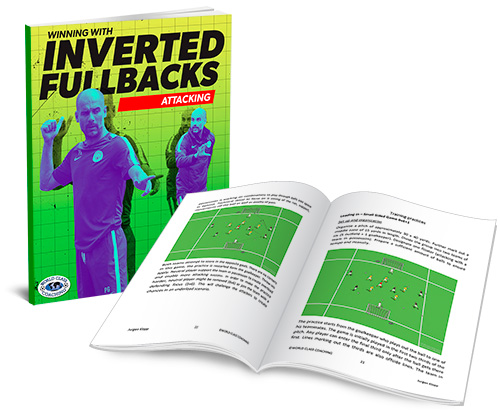
Table of Contents
PART TWO
BUILDING UP FROM THE BACK
HOW TO COACH INVERTED FULLBACKS
DRILLS AND EXERCISES
The "inverted fullback" and "La salida lavolpiana"; how to build up from the back
From this point of view, it's very interesting to analyze how this way of play matches the very well known "La salida lavolpiana" (the La Volpe placement of the players while building up from the back). Here's the basic formation for this kind of formation's shape:
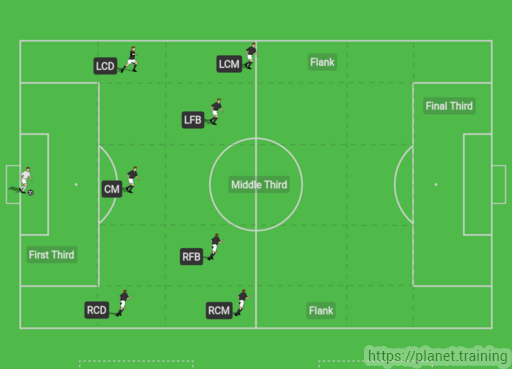
When this building up tactic is successful, the center player is able to overcome the first opposition line of pressure, thanks to a pass or dribbling the ball over it.
The two outer and wide players must be able to create numerical advantage, inviting the nearest opponent to put pressure, and then playing inside the free spaces that are supposed to be created.
When the first line of pressure is overcome, Lahm for Bayern Munich, or the "inverted fullback" in general, can play in the middle third, as extra player. For this reason, one of the midfielder can run up on the field to play near the forwards or very close to a second midfielder, like, as instance, De Bruyne and David Silva. The second "inverted fullback can now decide to run wider and to overlap, if the defense is a line of four,
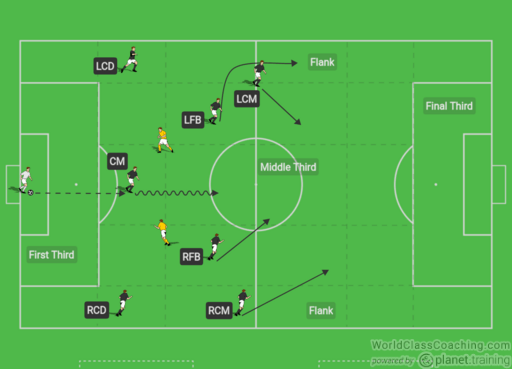
or to keep the team balanced if the defense is a line of three players.
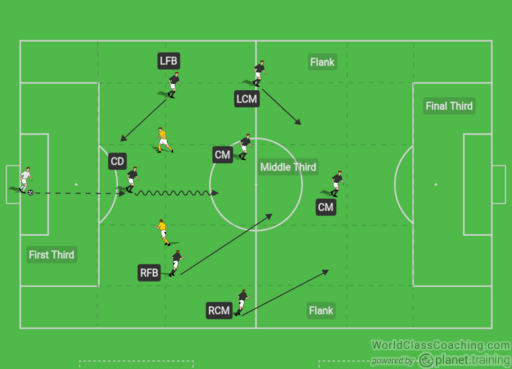
Here's an example of building up phase positions of this 2017/2018 season, while playing out, from Guardiola's Manchester City with three at the back.
They are placed on the pitch as La Volpe asked his players to do; the difference is the center back is in possession instead of a center midfielder, and the inverted fullbacks (Otamendi and Delph) are playing replacing the outer center defenders. This way all the other players in the middle third can play higher on the field and a high density is ensured all over the opposition’s half.
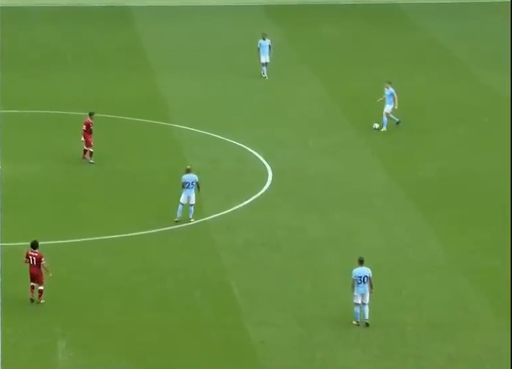
When the fullbacks play "inside" the field, rotations and changes of position among the midfielders are allowed; and these exchanges make the possession phase more unpredictable: they create chances to free the teammates between the opposition lines,
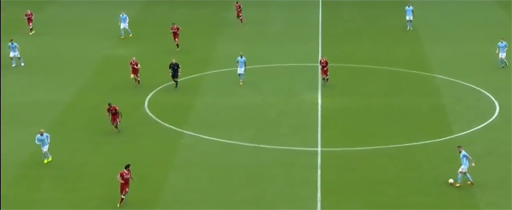
or to take advantage of the whole width of the field,
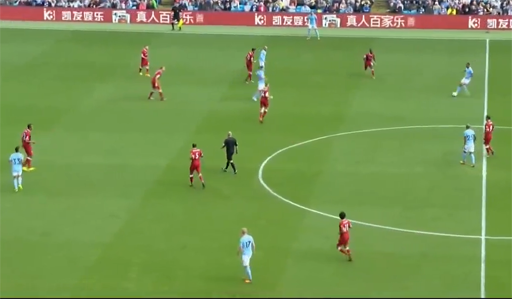
and then to attack the opposition goal.
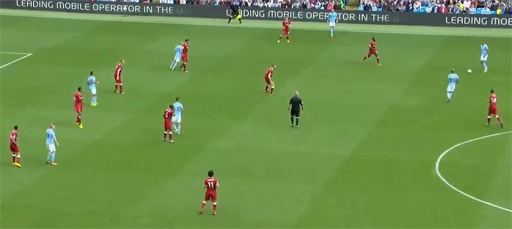
To use both the feet is very important, as general requirement, because the left back should receive with the left foot, directing the side of play toward the center of the field, playing with the right foot then; and it is obvious that the exact opposite happens on the other side.
Therefore, a left footed player on the right could more easily orient the ball control inside the field, with the inside part of the right foot or the outside part of the left foot, and then he could look for the best pass lanes using his natural foot; this could be true according to the prior principle of play.
But the basic technical skills to orient the ball control toward the center while receiving and the skill to scan the field like a playmaker become essential.
As we already have covered, the inverted foot or side is not the first condition; using both feet is important for the playing combination, as the fullbacks are now considered as midfielders.
In this picture it's very clear how Walker (the player in possession) is playing as "inverted fullback,” being right footed and on the right side of the field.
The direction of play toward the center of the field means "Inverted Fullback,” but not the feet; and it's like this thanks to Pep Guardiola.
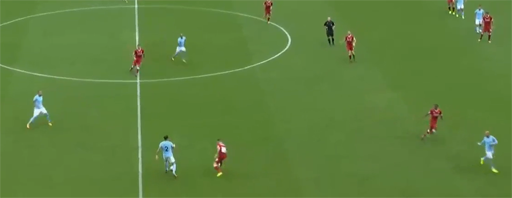
How to coach it
Exercise 1: 2 + 1 v 2, 2 v 1 duels to build up with inverted fullbacks or 2 v 2
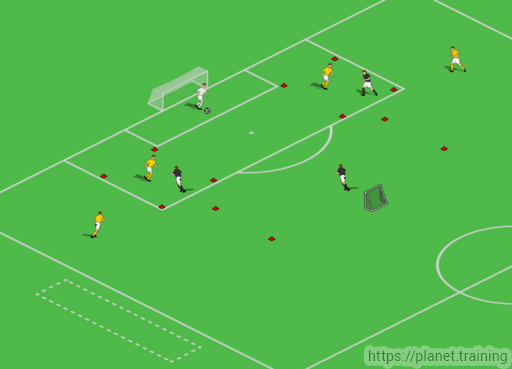
Two squares are placed on the upper corners of the penalty area and a double 1 v 1 duel is played inside them.
Two fullbacks are placed wider and out of the penalty area.
The third forward is placed inside a center rectangle, just out of the penalty area.
The goalkeeper is in possession of the ball.
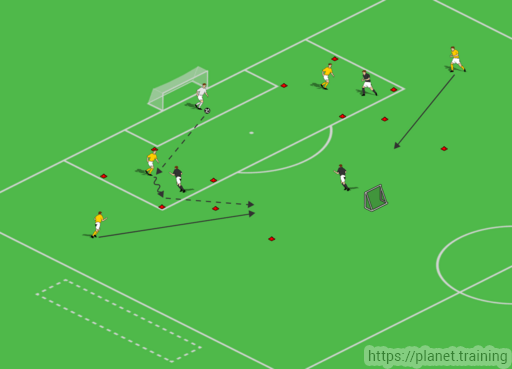
The goalkeeper passes the ball toward the center defender inside one of the squares, and he must win the 1 v 1 duel to pass it again on the run of the fullback.
The fullback is running toward the center square together with the opposite teammate.
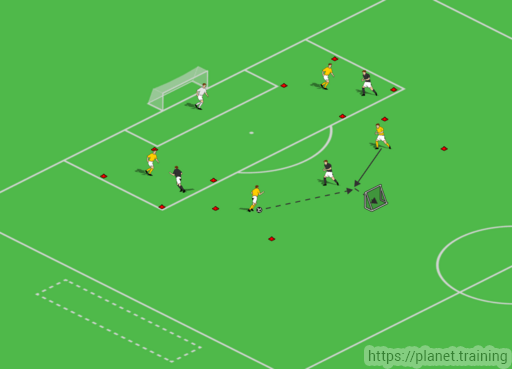
A 2 v 1 duel is now played inside the center rectangle to finish in the mini goal.
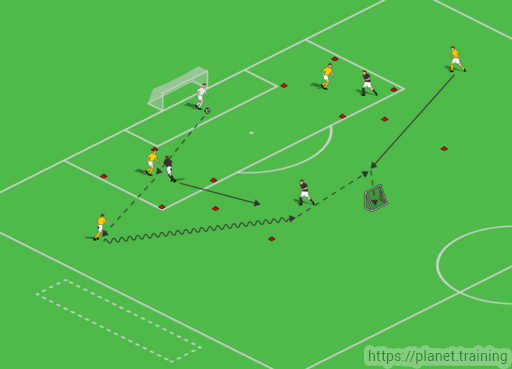
If the center back is not able to pass the ball inside the center square, he can decide to pass wide toward the teammate, who can dribble toward the center square to finish, together with the opposite fullback.
But in this situation, the first forward, who was playing the 1 v 1 duel, can run back to create a 2 v 2 duel, equalizing the number of players.
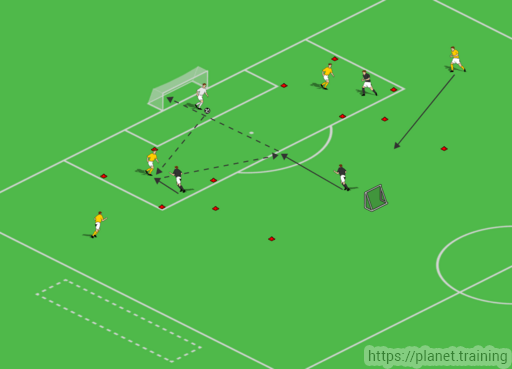
If the forwards win the possession, they play a 3 v 2 duel to finish and score in the regular goal with the goalkeeper.
Variation:
• If the center back must pass wide, the fullback who dribbles inside the center rectangle must be the one on the other side, after a switch of the side of play
• If the center back must pass wide, the fullback who dribbles inside the center rectangle must play 1 v 1 against the forward
Eye on:
• Speed of play to win the 1 v 1 duel
• Timing of runs without the ball of the fullbacks
• Speed of dribbling the ball forward
• Passing combinations to win the 2 v 1 duel
Exercise 2: from 1 v 2 to 2 v 2, 1 v 1 duel to finish or 3 v 2
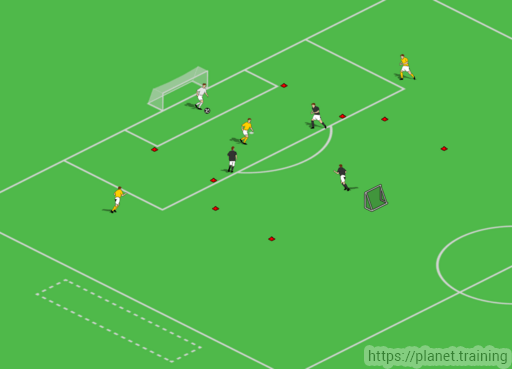
Two squares are placed inside and outside the penalty area.
One defender is outnumbered 1 v 2 inside the first square at the beginning, and another forward is placed inside the outer one.
Two fullbacks are placed wide and out of the penalty area.
The goalkeeper is in possession of the ball.
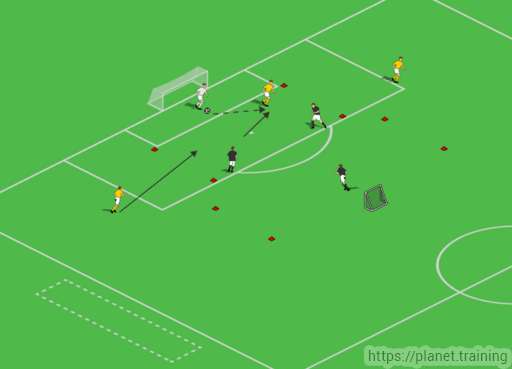
As the goalkeeper passes the ball toward the first outnumbered defender inside the nearest square, one of the fullbacks must run inside to create a 2 v 2 duel, equalizing the number of players.
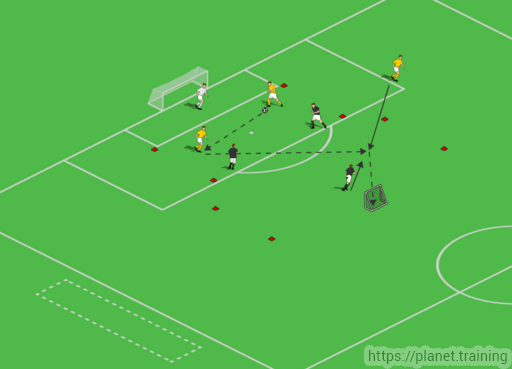
The objective of the players now in possession is to pass forward inside the square out of the penalty area, where the second fullback must run to receive and to finish.
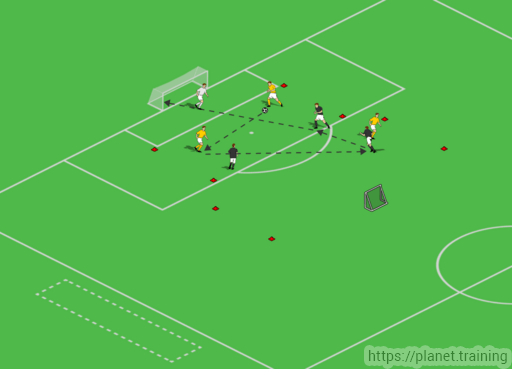
If the forwards win the possession, they play a 3 v 2 duel to finish and to score in the regular goal with the goalkeeper.
Variation:
• Both the fullbacks run forward inside the outer square; the first receiver must pass as soon as possible
• If the forwards win the possession they play 2 v 3 to finish; this rule makes the recovery of the ball easier
Eye on:
• Speed of play to win the 1 v 2 or the 2 v 2 duels
• Timing of runs without the ball of the opposite fullback
• Passing combinations to win the counter attacking duels


